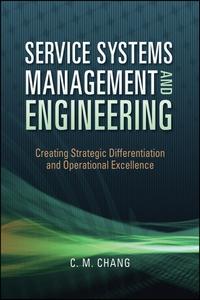Question
SunOil is a manufacturer of petrochemical products with worldwide sales. The vice president of supply chain is considering several options to meet demand. One possibility
SunOil is a manufacturer of petrochemical products with worldwide sales. The vice president of supply chain is considering several options to meet demand. One possibility is to set up a facility in each region. The advantage of such an approach is that it lowers transportation cost and also helps avoid duties that may be imposed if product is imported from other regions. The disadvantage of this approach is that plants are sized to meet local demand and may not fully exploit economies of scale. An alternative approach is to consolidate plants in just a few regions. This improves economies of scale but increases transportation cost and duties. When designing a regional configuration, the manager must consider these quantifiable trade-offs along with non-quantifiable factors such as the competitive environment and political risk.
The first step is to collect the data in a form that can be used for a quantitative model. For SunOil, the vice president of supply chain decides to view the worldwide demand in terms of five regionsNorth America, South America, Europe, Africa, and Asia. The data collected are shown in an excel spreadsheet. All costs are in thousands of dollars. For example, it costs $92,000 (including duties) to produce 1 million units in North America and sell them in South America. Also, it costs $6 million in annualized fixed cost to build a low-capacity plant in North America. Observe that the data collected at this stage are at a fairly aggregate level. There are fixed as well as variable costs associated with facilities, transportation, and inventories at each facility. Fixed costs are those that are incurred no matter how much is produced or shipped from a facility. Variable costs are those that are incurred in proportion to the quantity produced or shipped from a given facility. Facility, transportation, and inventory costs generally display economies of scale, and the marginal cost decreases as the quantity produced at a facility increases. In the models we consider, however, all variable costs grow linearly with the quantity produced or shipped.
SunOil is considering two plant sizes in each location. Low-capacity plants can produce 10 million units a year, whereas high-capacity plants can produce 20 million units a year. High-capacity plants exhibit some economies of scale and have fixed costs that are less than twice the fixed costs of a low-capacity plant. All fixed costs are annualized. The vice president wants to know what the lowest-cost network should look like.
| Demand Region Production and Transportation Cost per 1,000,000 Units | Fixed | Low | Fixed | High | |||||
| Supply Region | N. America | S. America | Europe | Asia | Africa | Cost ($) | Capacity | Cost ($) | Capacity |
| N. America | 81 | 92 | 101 | 130 | 115 | 6,000 | 10 | 9,000 | 20 |
| S. America | 117 | 77 | 108 | 98 | 100 | 4,500 | 10 | 6,750 | 20 |
| Europe | 102 | 105 | 95 | 119 | 111 | 6,500 | 10 | 9,750 | 20 |
| Asia | 115 | 125 | 90 | 59 | 74 | 4,100 | 10 | 6,150 | 20 |
| Africa | 142 | 100 | 103 | 105 | 71 | 4,000 | 10 | 6,000 | 20 |
| Demand | 12 | 8 | 14 | 16 | 7 |
| Demand Region Production and Transportation Cost per 1,000,000 Units | Fixed | Low | Fixed | High | |||||
| Supply Region | N. America | S. America | Europe | Asia | Africa | Cost ($) | Capacity | Cost ($) | Capacity |
| N. America | 81 | 92 | 101 | 130 | 115 | 6,000 | 10 | 9,000 | 20 |
| S. America | 117 | 77 | 108 | 98 | 100 | 4,500 | 10 | 6,750 | 20 |
| Europe | 102 | 105 | 95 | 119 | 111 | 6,500 | 10 | 9,750 | 20 |
| Asia | 115 | 125 | 90 | 59 | 74 | 4,100 | 10 | 6,150 | 20 |
| Africa | 142 | 100 | 103 | 105 | 71 | 4,000 | 10 | 6,000 | 20 |
| Demand | 12 | 8 | 14 | 16 | 7 |
Step by Step Solution
There are 3 Steps involved in it
Step: 1

Get Instant Access to Expert-Tailored Solutions
See step-by-step solutions with expert insights and AI powered tools for academic success
Step: 2

Step: 3

Ace Your Homework with AI
Get the answers you need in no time with our AI-driven, step-by-step assistance
Get Started


